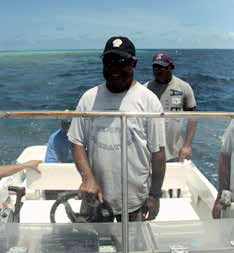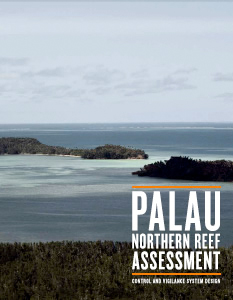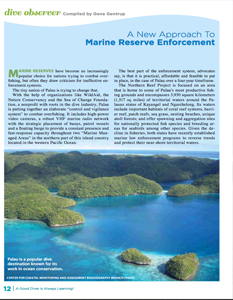Conservation Priorities
Threatened Species & Habitats – The Northern Reef Project Palau
 The Northern Reef Project is home to some of Palau’s most productive fishing grounds and encompasses a total of 3,930 Km2 of territorial waters pertaining to the states of Kayangel and Ngarchelong. Its waters include important habitats of coral reef systems, barrier reef, patch reefs, sea grass, nesting beaches, unique atoll forests; and offer spawning and aggregation sites for nationally protected fish species and breeding areas for seabirds among other species. Given the decline in fisheries, both states have recently established marine law enforcement programs to reverse trends and protect their near shore territorial waters (12NM).
The Northern Reef Project is home to some of Palau’s most productive fishing grounds and encompasses a total of 3,930 Km2 of territorial waters pertaining to the states of Kayangel and Ngarchelong. Its waters include important habitats of coral reef systems, barrier reef, patch reefs, sea grass, nesting beaches, unique atoll forests; and offer spawning and aggregation sites for nationally protected fish species and breeding areas for seabirds among other species. Given the decline in fisheries, both states have recently established marine law enforcement programs to reverse trends and protect their near shore territorial waters (12NM).
WildAid in cooperation with the Nature Conservancy recently designed an enforcement system for the Northern Reef project that is practical, affordable and feasible to implement over a four-year timeframe. Our strategy combines high-power video cameras and a robust VHF marine radio network with the strategic placement of buoys, patrol vessels and a floating barge to provide a
constant presence and fast response capacity throughout both Marine Managed Areas (MMAs). A recent critical first step has entailed the establishment of the VHF marine radio network: the core of enforcement operations. The network does not only link the control center with patrol vessels and Ranger at ports, but also holds potential for linking tourism operators and fishers into the control and vigilance system over time.
With the support of the Sea of Change Foundation, we will strengthen the enforcement of the Northern Reefs area via the following two activities:
- Setting up a control center for enforcement operations at Todai; and
- Installation of a high-power video camera at Todai to provide 10NM coverage as illustrated above.
The video camera provides coverage of key access waterways for vessels traveling into Northern Reef territorial waters. Once a vessel is detected, the control center can inform Rangers that are moored at any one of the four proposed buoys throughout the NMMA for interdiction. Ideally, the patrol vessel can intercept the vessels without having to travel a long distance from the buoy. Four moorings were chosen based on bathymetry and the strategic location of Ebiil, spawning aggregations and territorial boundaries.
2016 Update: WildAid Interim Report
PDF>
Click to View the details of this important project supported by your donations.
PDF>
A New approach to Marine Reserve Enforcement Dive Observer by Gene Gentrup
PDF>






